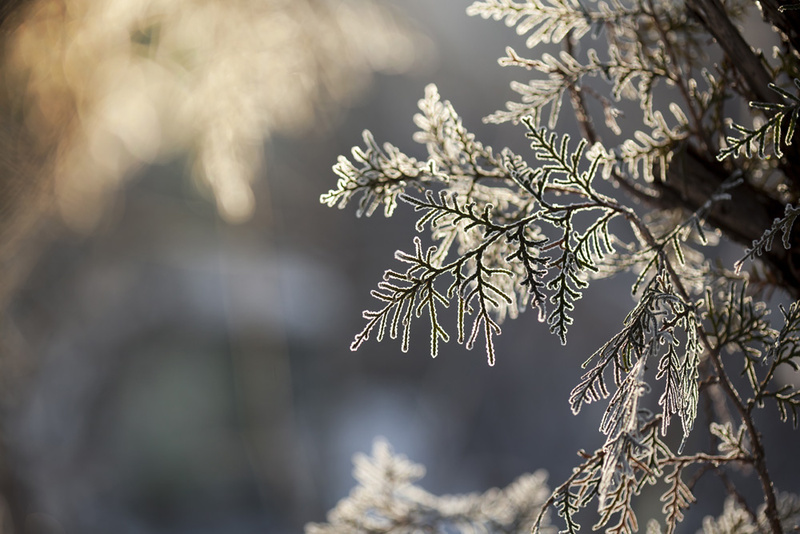
Protect Your Plants from the Cold
Some areas of Florida experience freezing temperatures during the winter. This can kill or damage tropical or temperate plants. Bring potted plants inside or group them together outside against a wall. Cover cold-sensitive plants and shrubs with sheets or garden blankets.
Floridians love their tropical and temperate plants. Bougainvillea, ginger, palms, ferns, citrus, avocados, succulents, bromeliads . . . these are a few of our favorite things.
Winter freezes rarely strike south Florida, so these favorite plants thrive year-round. They are vulnerable, however, in central Florida, where a freeze occurs once or twice a winter, and truly at risk in colder north Florida.
Given Floridians’ propensity to grow warm-weather plants throughout the state, what measures can be taken to protect plants from a freeze?
How to Protect Potted and Hanging Plants
Bring as many potted plants inside as possible. Consider parking your car outside and using that garage space for your vulnerable plants.
Plants in pots that can’t be moved inside should be grouped together if possible. Place them in protected areas, such as against walls or fences. These structures absorb heat during the day and then radiate that heat after dark.
Cover the plants. Bed sheets work fine as covering material, wrapped over and around plants and fastened with safety pins or clothes pins. Make sure the sheets extend all the way to the ground.
No sheets? Garden blankets or frost blankets can be easily purchased online or at Walmart or home improvement stores and garden centers. Stakes can be purchased as well, and these are a good idea when wind is forecast with a freeze.
Remember that the roots of potted or hanging plants are especially vulnerable during a freeze. Roots near the edges of the pots can get damaged and turn spongy and black. The plant won’t die, but it will lose its vigor until new roots grow. Be sure to put hanging plants on the ground and extend their covers all the way to the ground to capture warmth from the soil.
How to Protect Plants in the Ground
Water the soil well during the day. It will hold warmth and protect plant roots, which are often just under the ground and vulnerable to freezing.
Add mulch around the bases of plants to protect their roots. Put sheets or frost blankets over the plants all the way to the ground. Stake them or otherwise secure them so that if it’s windy, the covers won’t blow off.
You can also cover plants with containers, such as glass or plastic cloches, flower pots, jars, milk jugs (with the necks cut out), baskets, buckets, garbage cans, tubs, stock pots, etc.
Taller plants or shrubs can be protected by creating an insulation barrier around them. Tie the plant up loosely. Put stakes into the ground around the plant (at the same height as the plant). Wrap the stakes in cloth or burlap or plastic. Inside this screen put straw or hay or loose leaves. These will insulate the plant or shrub from the cold.
Be sure to cover plants and beds before it gets dark and while the soil still holds the heat of the day. Turn off your sprinkler system.
What to Do After a Freeze
If you have used plastic as a covering during an overnight freeze, be sure to remove it in the morning. Left on too long on a sunny day, it can act as an oven and bake the plants underneath.
Brown leaves can be removed. Don’t immediately prune off branches that look dead. Wait until spring. You may be surprised to see new growth. At that point, you can prune off dead portions.